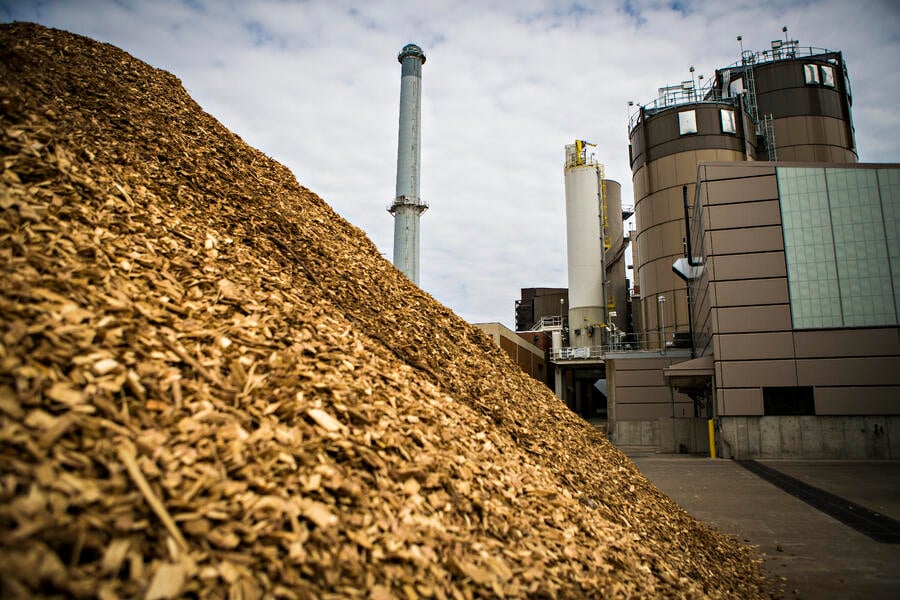The U.S. Environmental Protection Agency’s (EPA’s) plan to regulate carbon emissions is just the latest challenge facing the U.S. electric power system. Technological innovation is disrupting old ways of doing business and accelerating grid modernization. Earlier this year, AEE released Advanced Energy Technologies for Greenhouse Gas Reduction, a report detailing the use, application, and benefits of 40 specific advanced energy technologies and services. This post is one in a series drawn from the technology profiles within that report.

Solid biomass has been used as fuel in power plants for many decades. The dominant technology is direct combustion in which biomass is burned in a boiler to generate high-pressure steam, which is used to turn a steam turbine-generator set. Other technologies also exist, such as gasification, in which the biomass is first converted to a synthesis gas that can be burned in boilers, reciprocating engines and gas turbines. Solid biomass resources include logging and agriculture residues, forest products residues such as sawdust, bark and spent pulping liquors, as well as dedicated energy crops, both woody and herbaceous.
In the U.S., biomass represents about 5% of total primary energy consumption, split roughly 50-50 between electricity/heat generation and biofuels production. U.S. biomass electricity generation has remained steady over the past decade at around 5 TWh, about 1% of the nation’s electric generation. Most biomass power generating capacity is in the forest products industry, where large quantities of biomass residue are readily available onsite at no cost.
A biomass power plant is relatively expensive to build compared with plants utilizing similar technology for other fuels because biomass plants tend to be smaller, but still require large capital expenses. However, when fuel costs are favorable, biomass offers a viable alternative to fossil fuels or electricity purchased from the grid. Biomass is also a form of baseload energy. One of the largest woody biomass plants, located in Nacogdoches County, Texas, produces 100 MW of baseload power and is fueled by materials sourced within a 75-mile radius of the plant. It is also possible to repower older, smaller coal-fired plants with biomass, displacing coal with a renewable fuel. These older plants typically have limited or no modern emissions controls, so repowering leads to significant reductions in emissions of criteria pollutants as well.
Biomass is considered by most authorities to be carbon neutral, provided that it is grown on a sustainable basis. That’s because the CO2 released during combustion is balanced by the carbon dioxide captured by trees and energy crops as they regrow.[1] On that basis, replacing fossil fuels with biomass reduces net greenhouse emissions. In recent years, however, this view has been challenged, with analysis suggesting that biomass may not reduce greenhouse gas emissions much in the short run, given the time it takes for new growth to absorb the carbon dioxide produced by combustion. In 2011, EPA deferred for three years certain permitting rules on biomass power plants so that it could study the science of emissions from bioenergy sources. It is widely acknowledged that with feedstock that regrows quickly or would otherwise decompose and release CO2 on its own (i.e., forest or lumber and paper mill waste), biomass energy reduces net greenhouse gas emissions relative to fossil fuel alternatives.
[1] This is the case over a timescale of years to decades, depending on the rate of growth of biomass.
